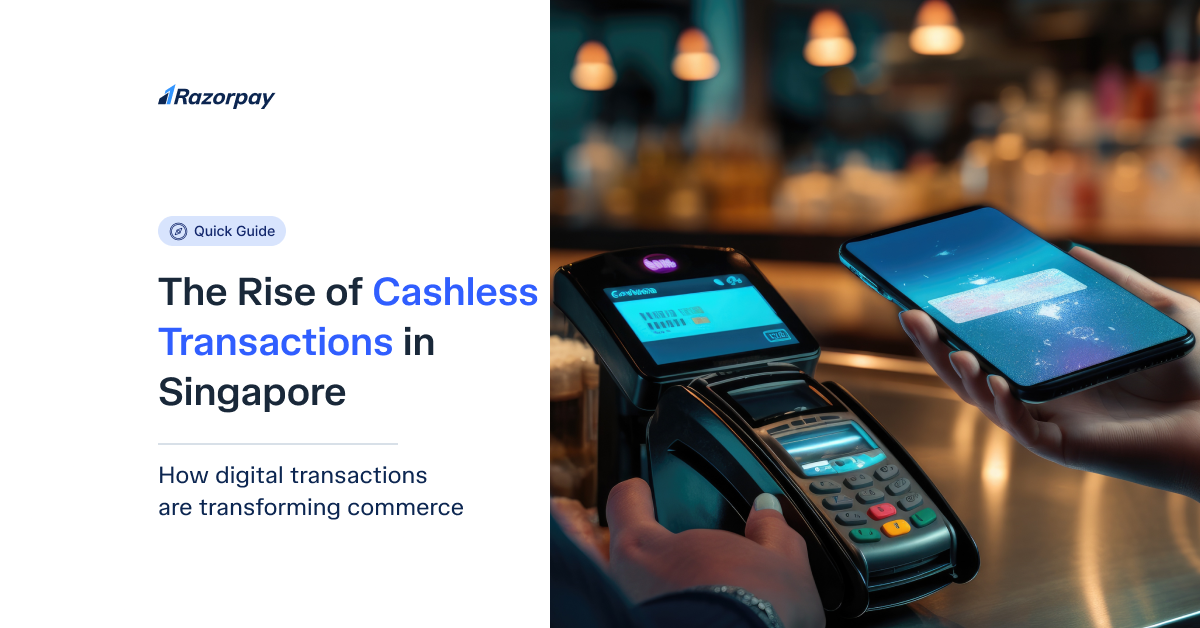Think about the last time you paid for your morning coffee or a meal at a hawker centre. Chances are, the transaction ended not with the jingle of coins, but with the quiet beep of a scanner or a tap of a phone. This is the new sound of commerce in Singapore. The move away from physical cash is no longer a futuristic concept; it’s a daily reality.
Driven by strong government initiatives under the Smart Nation banner and a rapid shift in consumer habits, Singapore has become a global leader in the adoption of cashless payments. For businesses, this is more than just a trend—it’s a fundamental transformation of the commercial landscape. Understanding and embracing this shift is now critical for operational efficiency, customer satisfaction, and long-term growth.
This guide explores the key drivers behind Singapore’s cashless revolution, the tangible benefits for businesses, and how you can strategically position your company to thrive in this new digital-first economy.
Key Takeaways
- Government-Led Initiative: Singapore’s cashless drive is a core part of its Smart Nation vision, with strong support from the Monetary Authority of Singapore (MAS) through initiatives like the unified SGQR code.
- Consumer Habit is King: Convenience, speed, and security have made digital payments the preferred choice for a majority of Singaporeans, a trend massively accelerated by the recent pandemic.
- Benefits for Business: Going cashless reduces operational costs associated with handling cash, enhances security, improves cash flow with faster settlements, and provides valuable sales data.
- PayNow as a Game-Changer: The introduction of PayNow made instant digital payments accessible to every business, from large corporations to the smallest hawker stalls, democratizing the e-payment landscape.
- The Future is Unified: The most effective business strategy is not just to accept cashless payments, but to manage them through a single, unified platform that streamlines operations and reconciliation.
The Driving Forces Behind Singapore’s Cashless Revolution
The rapid transition to a cashless society didn’t happen by accident. It’s the result of a concerted effort by several key players and a shift in public mindset.
1. Strong Government and Regulatory Push
The Singapore government has been a primary catalyst. Initiatives from the MAS have been instrumental in building a robust and interoperable e-payment infrastructure. The most visible success of this is the Singapore Quick Response Code (SGQR). Before SGQR, a storefront might have needed multiple messy QR codes for different payment apps. Today, a single, unified SGQR code can accept payments from a wide variety of sources, dramatically simplifying the experience for both merchants and consumers.
2. Technological Innovation: The PayNow Effect
The launch of PayNow in 2017 was a watershed moment. By allowing instant fund transfers using just a mobile number or UEN, it removed the friction of traditional bank transfers. This made digital payments incredibly accessible and was quickly adopted by consumers and, crucially, by small businesses and hawkers who could now accept cashless payments without any expensive hardware.
3. A Fundamental Shift in Consumer Behaviour
Ultimately, the success of cashless payments rests on consumer adoption. Singaporeans have embraced the convenience, speed, and security of tapping a card or scanning a QR code. The COVID-19 pandemic acted as a massive accelerator, as hygiene concerns and a surge in e-commerce and food delivery made contactless payments the default choice for millions.
Did You Know?
According to a 2023 report from the Monetary Authority of Singapore, e-payment transactions have seen explosive growth.
The volume of PayNow transactions alone has consistently grown by over 50% year-on-year, demonstrating just how deeply embedded it has become in the daily lives of Singaporeans.
The Business Case: Why Embracing Cashless is a Competitive Advantage
For businesses, moving away from cash offers clear, tangible benefits that directly impact the bottom line.
- Improved Operational Efficiency: Handling cash is expensive. It involves costs related to counting, storage, security for transport, and time spent on bank deposits. Digital transactions automate this entire process, freeing up valuable time and resources.
- Enhanced Security: A cashless environment significantly reduces the risk of theft, robbery, and internal fraud associated with having physical cash on the premises.
- Increased Sales and Customer Satisfaction: In today’s market, not offering a customer’s preferred digital payment method can lead to a lost sale. A smooth, frictionless checkout experience is a key part of customer service.
- Valuable Data and Insights: Digital payments create a data trail. This information can be analyzed to understand peak sales hours, popular products, and customer spending habits, allowing for smarter business decisions.
How Your Business Can Thrive in a Cashless Singapore
The key to success is not just accepting digital payments, but managing them efficiently.
- Offer a Range of Options: Cater to all customer preferences by accepting the “big three” categories of cashless payments: Cards, PayNow, and Digital Wallets.
- Unify Your System: Managing multiple payment methods through separate channels creates a reconciliation nightmare. The smart solution is to use a single, unified payment platform.
- Partner with a Modern Payment Platform: A platform like Razorpay Singapore acts as your central command centre for all payments. It integrates every payment method into one system, providing a single dashboard for tracking sales and a unified settlement report. This automated reconciliation is a game-changer for SMEs, saving countless hours of manual accounting work.
Ready to Fully Embrace Singapore’s Cashless Future?
Don’t let fragmented payment systems slow you down. A unified platform provides the efficiency and clarity you need to grow.
Learn how Razorpay Singapore can streamline all your cashless payments.
Conclusion
The rise of cashless transactions in Singapore is a permanent and accelerating trend. It represents a fundamental shift towards a more efficient, secure, and data-driven economy. For businesses, the message is clear: embracing this change is no longer just an option, but an imperative. By adopting a unified approach to accepting and managing digital payments, you can reduce operational friction, enhance the customer experience, and position your business for success in the future of Singaporean commerce.
Frequently Asked Questions (FAQs) for Singapore Merchants
Is Singapore a completely cashless society?
Not yet, but it is one of the most advanced in the world. While cash is still used, particularly by certain demographics, the overwhelming majority of transactions by value are now electronic. The government’s goal is to become a “cheque-free” and cash-lite society.
What is the most cost-effective cashless payment method for a small business?
For most SMEs in Singapore, PayNow is the most cost-effective option. Because it is a direct bank-to-bank transfer, it does not have the percentage-based fees (MDR) associated with card payments and typically involves only a very low, fixed transaction fee.
Do I still need to display multiple QR codes at my shop?
No. The SGQR initiative has solved this problem. A single SGQR code can accept payments from a wide variety of different banking apps and e-wallets, so you only need to display one code at your point of sale.
What is the easiest way for a new business to start accepting all types of cashless payments?
The simplest and most efficient way is to partner with a modern payment platform like Razorpay Singapore. Through a single integration, you can instantly get set up to accept credit/debit cards, PayNow, and digital wallets, all managed through one unified system.




